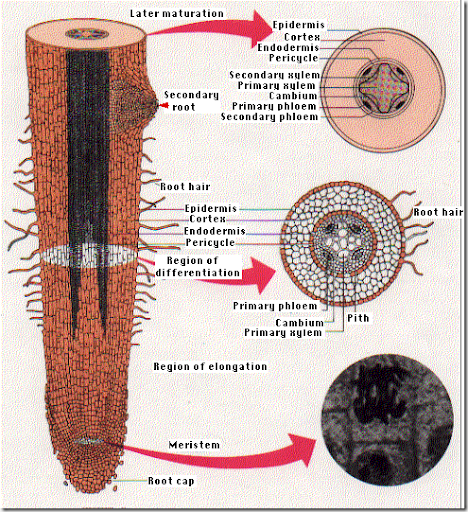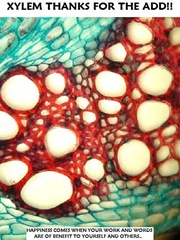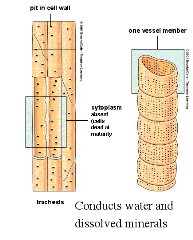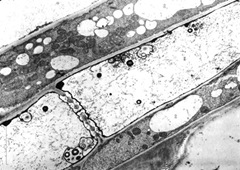Cell types
| Parenchyma | Collenchyma | Sclerenchyma |
| -alive | -alive | -dead |
| -thin cell wall | -uneven thickening of cell wall, extra deposit of cellulose | -liginifed cell wall, empty lumen |
| -provide support when turgid | -mechanism support with elastivity | -strong mechanism support |
-lots of intercellular space
-may contain chlorophyll
-unspecilized | -can growth without limiting other cell | -unable to elongate when mature |
 |  |  |
Stem anatomy

Root anatomy

The comparesion between the means of support of aquatic plant and terrestrial plant
| | Terrestrial plant | Aquatic plant |
| Collenchyma | V | X |
| Sclerenchyma | V | X |
| Air space | X | V |
| xylem | well developed to support, highlt lignified | poor developed, not to support |
Structural adaptation of xylem tissue
- elongated cell
- no end wall
- dead cell
- cell wall lignified and strengthened
- pits
- hexagonal in shape
|  
  |
Structural adaptation of phloem tissue
| Sieve tube: - elongated
- end wall forming sieve plates with pores
- no nucleus, tonoplast, endoplasmic reticulum, ribosome
- cytoplasmic strands
- plasmodoesmata linked with companion cell
Companion tube: - large nucleus
- lots of mitochondria
|    |











